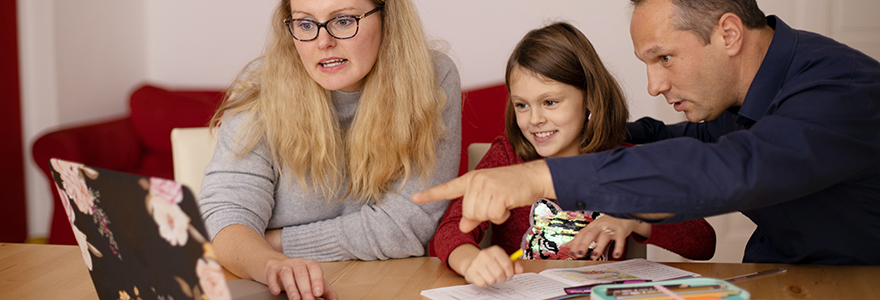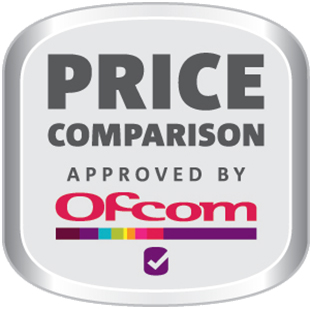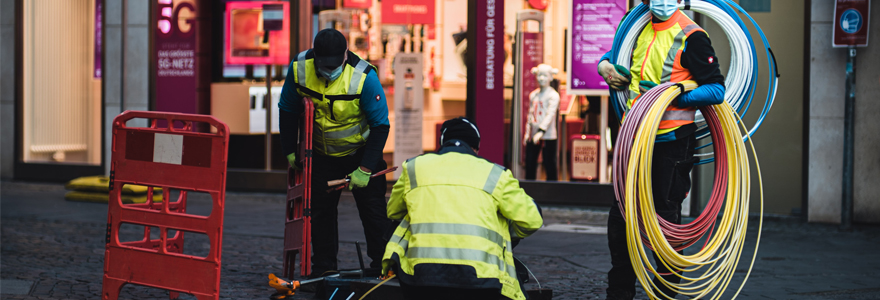What is the best broadband deal in my area?
Anyone who’s moved house more than once in the internet age knows that choosing a new broadband provider can be a minefield. Availability of broadband deals in your area is a real postcode lottery.
One one hand, we are lucky to have some of the world’s most affordable broadband in Britain, but the array of choices can also be confusing.
The good news is that a competitive market means that broadband providers are eager to outdo each other to grab your attention with great deals.
We always recommend chatting to neighbours about how they’ve got on with their broadband – nothing beats real-world experience. However, to get the best broadband for your address, you’re also going to need to do your own research before coming to a decision.


How to check broadband deals at your address
To check which providers offer broadband in your area, start by entering your postcode in the search below. BroadbandDeals.co.uk’s price comparison tool is approved by Ofcom. We’re also proud to offer the widest range of deals in the UK.
You can search by postcode only, or follow the prompts to do a full address search.
Of course this will only tell you which broadband deals are available at your address. You’ll need to decide for yourself which is the best deal for you.
Here are some things to consider:
Which is the cheapest broadband in my area?
If cost is your main concern, you might be tempted to simply pick the cheapest broadband deal available at your address.
This might well be a good choice! The cheapest deals aren’t necessarily the worst quality when it comes to broadband.
Broadband providers are all vying for your custom, so many offer very affordable deals to entice new customers. Meanwhile, if you’re really cash-strapped, there are deals designed for low-income families that won’t appear on comparison sites.
Bear in mind that some things may be worth paying a little extra for, however. If you’re looking for a deal that includes a premium TV bundle, you’re going to need to fork out more.
What’s the fastest internet provider in my area?
Wherever you live in the UK, the range of broadband speeds available to you is dependent on your local infrastructure.
In 2025, the huge majority of us have access to an Openreach landline connection – meaning at the very least you should hopefully have the option of bog-standard ADSL broadband in your area.
Fibre broadband deals are also pretty widespread a this point, opening up options for faster connectivity if you’re eligible at your address.
The creme-de-la-creme of home broadband, full-fibre deals are much less widely available, although coverage is expanding fast.
The speed of broadband is shown in Mbps – the higher the number the faster a connection you can expect. Bear in mind though that the speeds shown here are estimates based on the average.
When you enter your address on a provider’s website, you’ll be able to see a more accurate idea of the maximum and minimum speeds available to you.
You can use filters on the table above to see only the fastest broadband deals in your area. If Full-Fibre broadband deals are available at your address, that will always be the fastest and most reliable option.

Which is the best broadband provider in my area?
“Is TalkTalk broadband any good on my street?”
“Has anyone had trouble with Vodafone broadband round here?”
Ask three people on your street which is the best broadband provider, and you’ll probably get three different answers.
It’s frustrating, but to be honest “which is the best broadband provider in my area?” is a question with no straightforward answer.
If you have a bad experience with one provider, you’ll likely consider them to be ‘not good’, but in reality the most common broadband complaints are often down to infrastructure which many providers have little control over.
Having said that, it’s definitely worth asking which broadband providers get the most complaints. Ofcom release yearly broadband provider complaints league tables to that end.
At BroadbandDeals.co.uk, we also collect reviews from confirmed customers who have recently switched. You can see star ratings on every deal, or go to broadband provider reviews to read what other users have to say.
What if I can’t get broadband where I live?
Unfortunately, even with the rapid expansion of the UK’s broadband networks, some people are inevitably left behind.
If you’ve found it impossible to find a good broadband offer in your area, there are some options worth considering.
The Universal Service Obligation
Since 20th March 2020, the broadband Universal Service Obligation (USO) is in effect. This means that:
Every home and business in the UK has the legal right to request a decent, affordable broadband connection.
The USO says that if you can’t get a download speed of 10Mbps at your address, you’re entitled to request an upgraded connection.
USO requests are to be fulfilled by BT (or KCOM if you’re looking for broadband in Hull). If eligible, you’ll be able to get your connection upgraded and should pay no more than £46.40/month.
It’s by no means an ideal option, but if you’ve struggled to get decent broadband in your area, the USO may be worth looking into.
Satellite broadband
It might sound a bit sci-fi, but if you can’t get regular internet in your area, having your broadband beamed down from space is a real option.
Satellite broadband is expensive, and high latency can be a problem for some applications such as online gaming. However, if you need a good broadband and there’s nothing else available, it’s definitely worth it to read more about satellite broadband.
Frequently asked questions
-
Why can't I get some deals at my postcode?▼
Unfortunately it’s a bit of a postcode lottery, and it mostly depends on the infrastructure in your area.
Some providers can only supply households on their own cable networks, such as Virgin, Gigaclear and KCOM. Most others are reliant on the Openreach network which covers most of the country – but not everywhere. Often rural areas get the short straw because the expense of running cables can be prohibitive.
To get fibre deals, you need to be in an area where the exchange and cabinets have been upgraded to fibre optic cables and there needs to be spare capacity available for your connection.
Providers may choose not to supply your postcode if they aren’t confident of giving you a good speed. -
What is Fibre to the Cabinet/FTTC?▼
FTTC stands for Fibre to the Cabinet.
The ‘Fibre’ bit means it is fibre broadband, while ‘Cabinet’ refers to the green street cabinets which hold all the fibre broadband connections for a particular area.
This kind of broadband uses a fibre-optic cable from your ISP to the cabinet, then slower copper wiring from the cabinet to your home.
The speeds you’ll see available for FTTC are ‘up to 38Mbps’, ‘up to 52Mbps’, and ‘up to 76Mbps’.
You can check if FTTC, or fibre broadband, is available in your area by using the postcode checker on our homepage.
-
What is full fibre/FTTH/FTTP?▼
Full fibre, FTTH and FTTP are one and the same thing. FTTH stands for Fibre to the Home, and FTTP stands for Fibre to the Premises.
FTTP is a more popular term and you’re likely to see this one being used than FTTH.
The most common way of describing this type of broadband is to call it “full fibre”.
So what is it?
It is a fibre broadband connection that uses only fibre-optic cables, that is not mixed with slower copper wiring, to deliver a broadband connection right into your home, and not via a green street cabinet.
This contrasts with the older technology of Fibre to the Cabinet (FTTC), sold as “up to 38Mbps” or “up to 76Mbps. Fibre to the Cabinet does use a mix of fibre-optic cables and copper, and delivers home broadband through your closest green street cabinet.
Full fibre can produce speeds of up to 1,000Mbps – commonly called ‘gigabit broadband’ and written out like this: 1Gbps.
Speeds are ‘symmetric’, which means that you can get similar upload and download speeds.
By contrast, older technology like ADSL or Fibre to the Cabinet can only produce ‘asymmetric’ speeds, meaning that uploads are 10 times or more slower than downloads.
These full fibre networks are still being built as we speak, so not everyone in the country will be able to get full fibre to their home just yet.
-
Can I get broadband without a landline?▼
It’s possible, but most broadband comes through landlines in the final stretch from the street cabinet to your door. Most deals include line rental in the cost.
If you don’t have an existing line, some (but not all) providers will charge to install one.
The exceptions are Virgin Media and the new FTTP providers, where the fibre-optic cable comes all the way to your property. Some providers (including Plusnet) will allow you to get your landline from another provider and just charge for broadband, but it’s likely to be more expensive overall. So – most of us will need a landline – but of course you don’t have to use it for calls.














